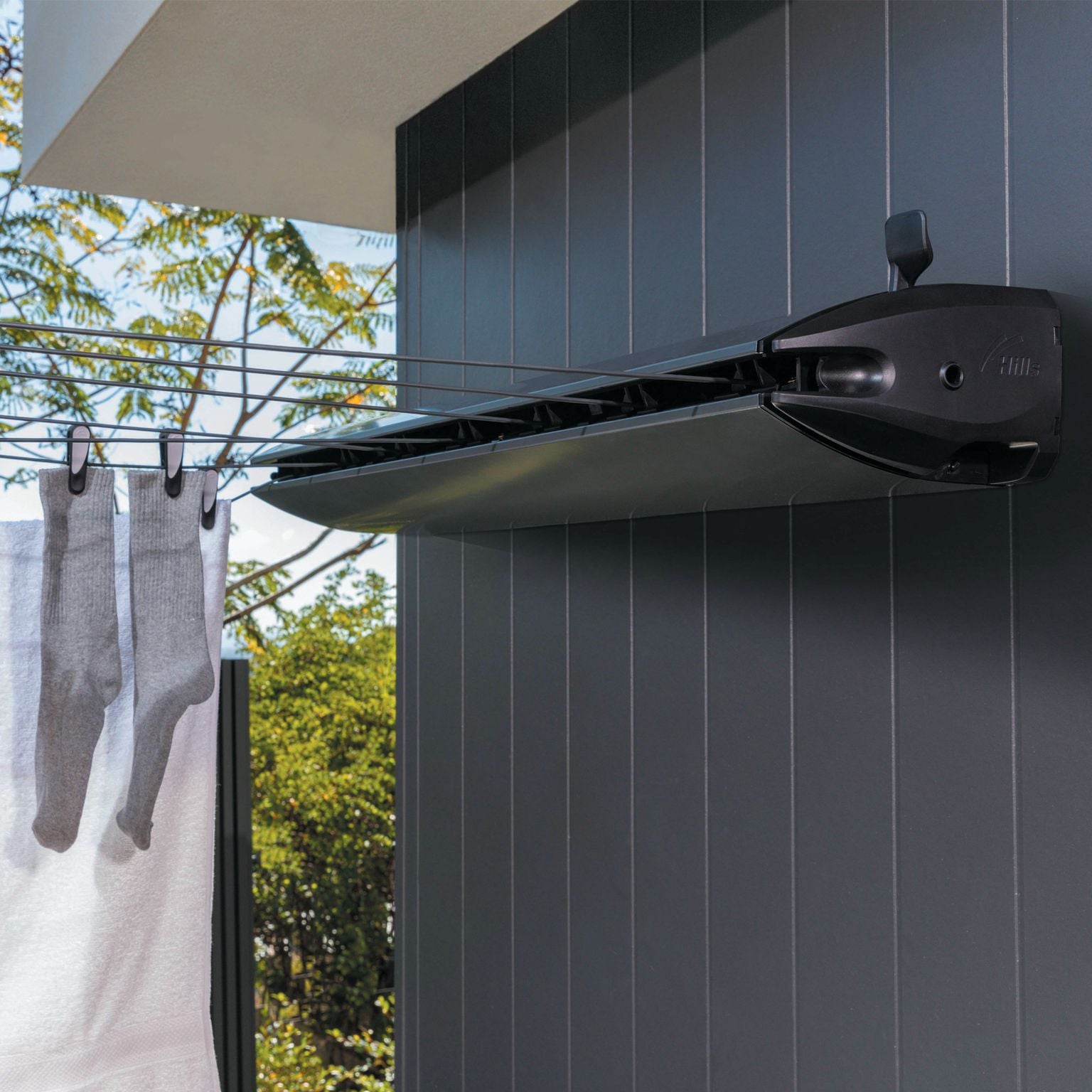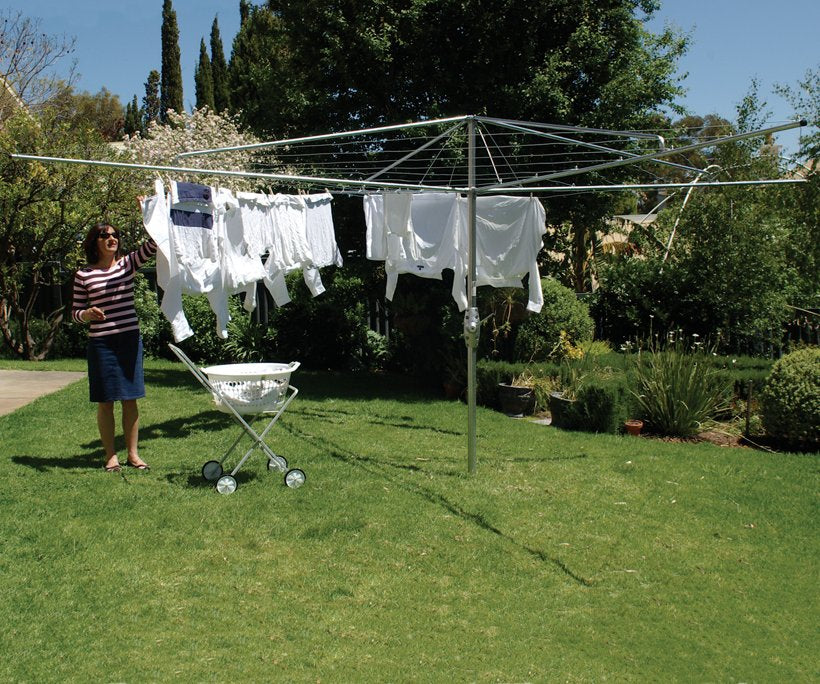The Ultimate Guide to Choosing the Right Hills Clothesline for Your Home
Choosing the right clothesline for your home isn’t just about drying clothes; it’s an eco-friendly gesture that can also beautify and add functionality to your outdoor space. Hills clotheslines, known for their robust design and durability, offer a variety of models to suit different lifestyle needs and spatial configurations. This guide provides a comprehensive overview to help you select the perfect Hills clothesline, ensuring that you make an informed decision that aligns with both your practical needs and environmental values.

Understanding Different Types of Hills Clotheslines
A. Rotary Clotheslines
Rotary clotheslines are a classic choice, ideal for larger gardens or yards. These clotheslines feature a central pole with arms that extend to support the lines, maximizing hanging space in a compact design. The rotary model is particularly beneficial for families or anyone with a higher volume of laundry, as it provides ample space for air circulation, which is crucial for efficient drying. Models vary from fixed to folding heads, allowing for adaptation to your specific garden space. Explore the different options available at Aussie Clotheslines and Letterboxes to find the perfect match for your laundry needs and outdoor space, ensuring longevity and efficiency in your home laundry practices.
B. Folding Frame Clotheslines
For those with limited space, the folding frame clothesline is a practical solution. Hills offers wall-mounted options that can easily be folded away when not in use, preserving valuable garden or courtyard space. These models are perfect for smaller households or urban dwellings with restricted outdoor areas. Despite their compact nature, these clotheslines do not compromise on capacity, cleverly designed to handle a substantial amount of laundry.
C. Retractable Clotheslines
The retractable clotheslines by Hills are designed for supreme convenience and space efficiency. These models feature lines that extend from a retractable reel, allowing you to use them only when necessary. This type is ideal for those who prefer a discreet and unobtrusive option, as it can be easily hidden away when not in use, blending seamlessly with the outdoor aesthetics.
D. Portable Clotheslines
Portable clotheslines offer ultimate flexibility. Hills’s portable models are lightweight and easy to move, making them perfect for homes without a dedicated laundry area or for those who enjoy the versatility of relocating their drying space according to the sun’s position or other needs. These are also a great option for renters or individuals who might not want to commit to a permanent fixture.

Factors to Consider When Choosing a Clothesline
A. Space Availability
The size and layout of your outdoor area largely dictate the type of clothesline that will best suit your home. A rotary clothesline, for example, would require a reasonably sized garden to accommodate its structure, whereas a retractable or folding frame model could be more appropriate for a balcony or a smaller yard. Assessing the space available is a critical first step in selecting the ideal clothesline.
B. Lifestyle and Usage
Your laundry habits are a significant consideration in clothesline selection. Large families or sports enthusiasts might prefer the rotary clothesline for its ample hanging space, whereas a smaller household might find a retractable model adequate. Consider how often you do laundry and the type of items you frequently wash when choosing the type and size of your clothesline.
C. Local Weather Conditions
Weather conditions in your area can also influence your choice of clothesline. Areas with frequent rain might benefit from a retractable or portable clothesline that can be easily moved indoors or under cover. Conversely, in locales with strong sunlight, a sturdy, UV-resistant rotary model might be the best choice to withstand prolonged exposure to harsh rays.
D. Aesthetic and Design Preferences
Clotheslines no longer need to be an eyesore. Hills offers a range of designs that can complement your home’s exterior. From sleek, modern aesthetics to more traditional designs, consider how the look of the clothesline blends with your outdoor space. The right choice can enhance your garden or balcony’s appearance along with its functionality.
E. Budget and Cost
Cost is a crucial factor in your decision-making process. Investing in a durable, high-quality Hills clothesline can offer long-term savings due to its longevity and reduced need for repairs or replacement. Consider your budget and weigh it against the benefits of higher-end models that might offer greater durability and added features.

Sustainability Benefits of Using a Clothesline
Opting for a clothesline over a tumble dryer has significant environmental benefits. Using a Hills clothesline harnesses the natural power of wind and sun for drying clothes, significantly reducing household energy consumption and lowering utility bills. Additionally, it decreases wear and tear on clothing, extending garment life and reducing waste. Embracing this sustainable practice contributes positively to reducing your carbon footprint.
Conclusion
Selecting the right Hills clothesline involves thoughtful consideration of your space, lifestyle, and environmental impact. Whether you choose a rotary, folding, retractable, or portable model, each offers unique benefits tailored to different needs. By considering the aforementioned factors and opting for a clothesline, you not only choose convenience but also make a sustainable choice for your home.
